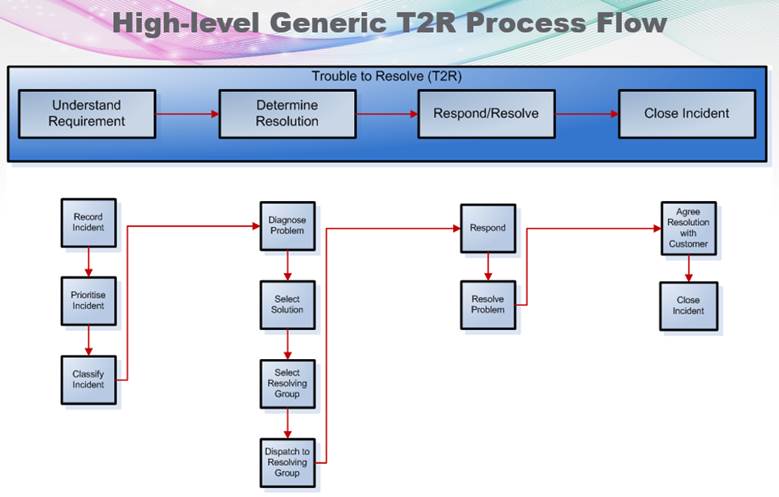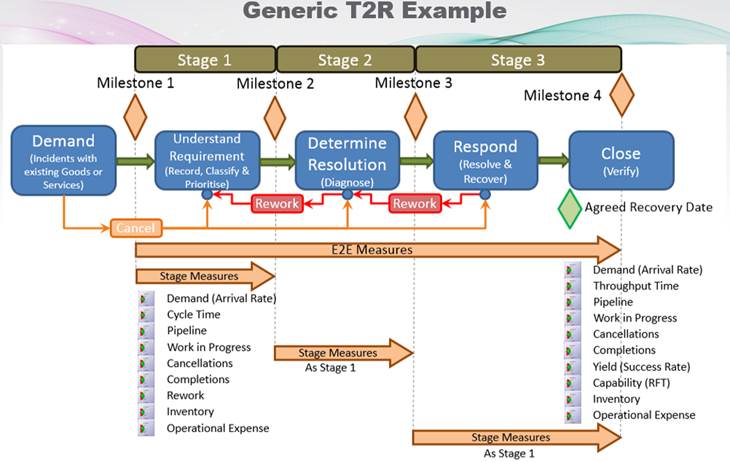The Future of Operational Performance Management – Part 3
01/03/2017

Eleanor Roosevelt, an inspiring leader in her own right who, amongst other things, helped found UNICEF, is reported as saying “Learn from the mistakes of others. You can’t live long enough to make them all yourself”. Seems like common sense to me, but when it comes to looking at what things people measure in the hope of improving business processes, it appears they purposefully go out of their way to ignore her sound advice.
In our previous posts, we considered 3 questions regarding what a standard way of reporting Operational Performance Management (50 years of other people’s mistakes) might look like, comparing this with standard accounting ways of assessing an organisation’s Financial Performance Management (500 years of people’s mistakes)?
- Would it contain just a standard set of measures?
- Would it be presented in a standard way?
- Would it be presented on a monthly basis?
And in our post of last week, we introduced the concept of 4 standard core Process Types (C2D or C2M, P2P, L2C and T2R) seen across public and private sector organisations, and likened them to the standard tools of the Finance profession such as P&L, Balance Sheet and so on. We’re going to take one of these 4 as an example to follow, namely T2R. Examples of T2R (Trouble to Resolve) processes are in Police, Ambulance, Asset/Infrastructure Management, IT Operations / Service Management – and we’ll take an example from the last of these to follow our line of thought. Specifically, let’s look at the typical IT Help Desk, something we have probably all experienced in our connected lives. “My laptop refuses to let me log in”, “I can’t get this letter printed”, “I need a new application loaded”, etc.
A high-level view might look like (breaking the process into 4 transformative or value-add Stages):

You might recognise some of these value-add Stages in the IT Help Desk context – Recording the Incident (Stage 1) will get you a so-called “Trouble-Ticket” as a reference and started along the process. You’ll be asked some questions about the problem, and it will be prioritised and so on. And now applying Ms Roosevelt’s advice, we have found after many 10s of years’ experience, that there are only up to 10 things that need to be measured for performance improvement:

Some Measures may not be relevant in certain contexts, but the principle is that the End2End measures and the Stage by Stage measures are very similar and count no more than 10. And our experience to date shows that these are all that are required for improving performance. Yes, there are other Measures that may be required for achieving Budgets and Targets (where they exist), or for Regulatory and Financial Reporting purposes. But the issue is, in order to know what levers to pull, it will always come back to one or more of the above. These are now akin to the Finance profession’s Revenue, Costs. Profit in a P&L sheet.
When accountants want to establish the financial health of an organisation, they don’t have a séance or a workshop about what they should measure. They go straight to their basic tools of the trade, and only where necessary deviate to more exotic measures. The proposition here is that the Measures above are the basic tools of the trade in Operational Performance Management. The problem is, people come up with all sorts of complex measures which can become impenetrable to find out what levers to pull, yet they will chase these measures month on month thinking they are somehow able to control performance. There are some organisations that offer libraries of 10s, 100s and even 1000s of so-called “standard” KPIs – you can’t live long enough …
We’ll look at some examples of what not to do and answer the final question above next time.
Categories & Tags:
Leave a comment on this post:
You might also like…
Automotive Engineering: From student to hypercar innovation at Rimac
We sat down with recent graduate Thomas Perrin, to discuss how his year on the MSc in Automotive Engineering at Cranfield University propelled him from the lecture hall directly into the ...
What this year at Cranfield really meant to me
Every Cranfield journey is unique. In this alumni reflection, Zachea Scicluna shares what her year at Cranfield truly meant, from facing uncertainty to gaining hands-on experience in industry-backed projects. I’ve been reflecting (and delaying) ...
Preparing for assignments and exams?
Sorry! We know it seems a bit mean to mention the exams in January rather than looking forward to the break before it! However, we know many of you will be thinking about your forthcoming ...
Screening for FTSE 100 companies on Bloomberg
So you’re researching an index and need some data on its constituent companies? Bloomberg’s Equity Screening tool makes light work of this, not just for the FTSE, but for indices, exchanges and sectors worldwide. Type EQS ...
Accelerating my future: How Cranfield put me on the fast track to automotive safety innovation
Hello! I’m Michaela Kaiser, and I’m thrilled to share my journey studying abroad. I’m from Calgary, Canada, and I recently graduated from Cranfield’s MSc Automotive Engineering course. My path to Cranfield ...
From Myanmar to Cranfield: My path to Renewable Energy
As someone who is passionate about sustainability, my career goal is to build a path in the renewable energy sector. My aspirations comes from the benefits of developing sustainable energy sources and ensuring energy ...






